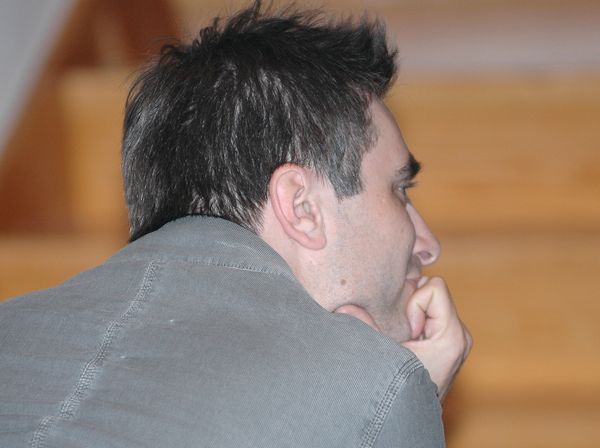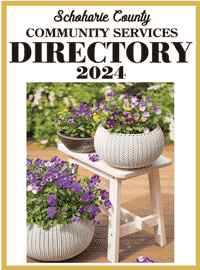Subscriptions
Menu
Advertisements
Activist says blue is the new green
4/30/2008 |
By Patsy Nicosia |

Blue is the new green.
That’s what lifelong activist Adam Werbach told Cobleskill just days after he’d delivered the same message to the United Nations.
Mr. Werbach was the next-to-the-last speaker in SUNY Cobleskill’s Ch-Ch-Ch Changes Lecture Series Thursday.
Elected the youngest-ever president of the Sierra Club in 1996 when he was just 23, by 2004, Mr. Werbach had become so disenchanted with the slow-moving environmental movement that he declared it “dead.”
No longer a kid, Mr. Werbach’s gone on to work with corporations—Wal-Mart among them—looking to “green up” their businesses, something that’s made him and his views even more controversial among some environmentalists.
Speaking for 45 minutes to a crowd of 50 or so, Mr. Werbach characterized this stage of his “journey” as working to “bridge the gap between what people care about and what they can do about it.”
That something, he said, is broadening the concept of “green” to “blue,” a way of living that incorporates social, cultural and economic concerns with environmental ones.
“I’ve come to see that you can eat locally, coop grown, organic heirloom tomatoes and still be a bad person,” he said.
Conversely, it’s possible to shop at, say, Wal-Mart, and make green—or blue—choices.
“Most people, while having green concerns, don’t know how to act on them,” he said.
“We still can’t get there without political change, but we also need to bring our ideals to the way we live—and shop. We need to solve this at the consumer level.”
In most homes, it’s the woman who does the shopping, Mr. Werbach said, and the message she’s getting from the environmental movement is “Stop.”
“Stop shopping. Start making your own household chemicals, growing your own food, hanging your clothes out on the line…But she says, ‘I don’t want a political movement in my home.’ “
Instead, Mr. Werbach argued, the best way to change how we’re living is step-by-step, what he called “personal sustainability practices.”
Though the phrase is cumbersome, it’s really just deciding to walk someplace you’d normally drive or…
“…reusing a cup once a week. Or upgrading your light bulbs. Or driving more efficiently,” Mr. Werbach said.
“The second step is asking the stores where you shop to start carrying products that support your practice,” he said, “and the third step is sharing your practice with your friends. It all starts with you.”
Mr. Werbach’s remarks Thursday built on those he’d delivered three days before as the keynote speaker at the United Nations Business for Environment Summit is Singapore.
In both talks he pointed out that twice as many people have too much to eat—and the problems that creates—as are starving to death, something he said only underscores the importance of shopping wisely.
Taking questions from the crowd at SUNY Cobleskill, Mr. Werbach said Wal-Mart has done a pretty good job going green “with the low-hanging fruit. Now comes the harder stuff.”
He agreed it’s easy for environmental issues to disengage people, turning them into what he called “disbelievers” and also for it all to become overwhelming.
“But there are enough resources on the planet,” he said. “The challenge is to distribute them equally.”
More information on “The Birth of Blue” is available at saatchis.com/birthofblue.









